Monacor EMG-330P Handleiding
Bekijk gratis de handleiding van Monacor EMG-330P (2 pagina’s), behorend tot de categorie Microfoon. Deze gids werd als nuttig beoordeeld door 26 mensen en kreeg gemiddeld 4.5 sterren uit 13.5 reviews. Heb je een vraag over Monacor EMG-330P of wil je andere gebruikers van dit product iets vragen? Stel een vraag
Pagina 1/2

ELECTRONICS FOR SPECIALISTS ELECTRONICS FOR SPECIALISTS ELECTRONICS FOR SPECIALISTS ELECTRONICS FOR SPECIALISTS ELECTRONICS FOR SPECIALISTS ELECTRONICS
EMG-330P
Bestell-Nr. • Order No. 23.4270
MONACOR INTERNATIONAL GmbH & Co. KG • Zum Falsch 36 • 28307 Bremen • Germany
Copyright © by MONACOR INTERNATIONAL. All rights reserved. A-0530.99.02.11.2018
Directional Electret Microphone
These instructions are intended for users with-
out any specic technical knowledge. Please
read these instructions carefully prior to oper-
ation and keep them for later reference.
1 Applications
This directional microphone is specially designed
for announcements, lectures, or any other speech
transmission requiring a stationary microphone. It
can be directly placed on XLR microphone connec-
tions, e. g. mixers provided with such a connection
on the front panel. Alternatively, together with
the microphone base DMS-1 from the MONACOR
product range, it can be used as a desk microphone.
For operating the microphone, phantom power
(9 – 48 V) is required.
2 Important Notes
The microphone corresponds to all relevant direc-
tives of the EU and is therefore marked with .
• The unit is suitable for indoor use only. Protect it
against dripping water and splash water, high air
humidity and heat (admissible ambient tempera-
ture range 0 – 40 °C).
• For cleaning only use a dry, soft cloth; never use
water or chemicals.
• No guarantee claims for the microphone and no
liability for any resulting personal damage or
material damage will be accepted if the micro-
phone is used for other purposes than originally
intended, if it is not correctly connected, or if it is
not repaired in an expert way.
If the microphone is to be put out of
operation denitively, take it to a local
recycling plant for a disposal which is not
harmful to the environment.
3 Operation
1) Place the supplied windshield / pop protection on
the microphone.
2) Insert the microphone into the XLR microphone
input of the audio unit (e. g. mixer) or into the
microphone base. The microphone input must
supply a phantom power (9 – 48 V). If not, con-
nect the microphone via a separate phantom
power supply unit (e. g. EMA-3 or EMA-200 from
the MONACOR product range) to the audio unit.
3) Adjust the microphone in an optimum way.
4 Specifications
Microphone type: . . . . back electret
Pick-up characteristic: hypercardioid / lobar
Frequency range: . . . . 50 – 18 000 Hz
Sensitivity: . . . . . . . . . . 10 mV/ Pa at 1 kHz
Impedance: . . . . . . . . . 250 Ω
Max. SPL: . . . . . . . . . . . 125 dB
Power supply: . . . . . . . )phantom power 9 – 48 V (
Dimensions: . . . . . . . . ⌀ 19 mm × 330 mm
Weight: . . . . . . . . . . . . 125 g
Connection: . . . . . . . . XLR, balanced
Subject to technical modication.
Microphone électret directionnel
Cette notice s’adresse aux utilisateurs sans
connaissances techniques particulières. Veuil-
lez lire la présente notice avant le fonction-
nement et conservez-la pour pouvoir vous y
reporter ultérieurement.
1 Possibilités d’utilisation
Ce microphone directionnel est spécialement
conçu pour des annonces, conférences ou autre
transmission de discours, où un microphone xe
est nécessaire. Il peut se brancher directement sur
une prise micro XLR, p. ex. sur des tables de mixage
dotées d’une telle connexion sur la face avant.
Il peut également être utilisé comme microphone
de table, combiné au pied micro DMX-1 de la
gamme MONACOR. Pour le fonctionnement du
microphone, une alimentation fantôme (9 – 48 V)
est nécessaire.
2 Conseils importants
Le microphone répond à toutes les directives
nécessaires de l’Union Européenne et porte donc
le symbole .
• Le microphone n’est conçu que pour une utilisa-
tion en intérieur. Protégez-le de tout type de pro-
jections d’eau, des éclaboussures, d’une humidité
élevée et de la chaleur (plage de température de
fonctionnement autorisée : 0 – 40 °C).
• Pour le nettoyer, utilisez uniquement un chiffon
sec et doux, en aucun cas de produits chimiques
ou d’eau.
• Nous déclinons toute responsabilité en cas de
dommages matériels ou corporels résultants si le
microphone est utilisé dans un but autre que celui
pour lequel il a été conçu, s’il n’est pas correcte-
ment branché ou s’il n’est pas réparé par une per-
sonne habilitée ; en outre, la garantie deviendrait
caduque.
Lorsque le microphone est dénitivement
retiré du service, vous devez le déposer
dans une usine de recyclage adaptée
pour contribuer à son élimination non
polluante.
CARTONS ET EMBALLAGE
PAPIER À TRIER
3 Fonctionnement
1) Placez la bonnette de protection anti-pop et
anti-vent livrée sur le microphone.
2) Fixez le microphone à l’entrée micro XLR de l’ap-
pareil audio (p. ex. table de mixage) ou sur le pied
micro. L’entrée micro doit délivrer une alimen-
tation fantôme (9 – 48 V). Si ce n’est pas le cas,
connectez le microphone via une alimentation
fantôme distincte (p. ex. EMA-3 ou EMA-200 de
la gamme MONACOR) à l’appareil audio.
3) Orientez le microphone de manière optimale.
4 Caractéristiques techniques
Type : . . . . . . . . . . . . .back électret
Directivité : . . . . . . . .hypercardioïde / faisceau
(lobé)
Bande passante : . . .50 – 18 000 Hz
Sensibilité : . . . . . . . .10 mV/ Pa à 1 kHz
Impédance : . . . . . . .250 Ω
Pression sonore
maximale : . . . . . . . .125 dB
Alimentation : . . . . .alimentation fantôme
9 – 48 V ()
Dimensions : . . . . . . .⌀ 19 mm × 330 mm
Poids : . . . . . . . . . . . .125 g
Connexion : . . . . . . . . XLR, symétrique
Tout droit de modication réservé.
Elektret-Richtmikrofon
Diese Bedienungsanleitung richtet sich an Be-
nutzer ohne besondere Fachkenntnisse. Bitte
lesen Sie die Anleitung vor dem Betrieb gründ-
lich durch und heben Sie sie für ein späteres
Nachlesen auf.
1 Einsatzmöglichkeiten
Dieses Richtmikrofon ist speziell für Durchsagen,
Vorträge oder sonstige Sprachübertragung geeig-
net, bei denen ein feststehendes Mikrofon benötigt
wird. Es lässt sich direkt auf einen XLR-Mikrofon-
anschluss stecken, z. B. bei Mischpulten mit einem
solchen Anschluss auf der Frontseite. Oder kann es
zusammen mit dem Mikrofonfuß DMS-1 aus dem
Sortiment von MONACOR als Tischmikrofon einge-
setzt werden. Zum Betrieb des Mikrofons ist eine
Phantomspeisung (9 – 48 V) erforderlich.
2 Wichtige Hinweise
Das Mikrofon entspricht allen relevanten Richt-
linien der EU und trägt deshalb das -Zeichen.
• Setzen Sie das Mikrofon nur im Innenbereich ein
und schützen Sie es vor Tropf- und Spritzwasser,
hoher Luftfeuchtigkeit und Hitze (zulässiger Ein-
satztemperaturbereich 0 – 40 °C).
• Verwenden Sie für die Reinigung nur ein tro-
ckenes, weiches Tuch, niemals Chemikalien oder
Wasser.
• Wird das Mikrofon zweckentfremdet, falsch an-
geschlossen oder nicht fachgerecht repariert,
kann keine Haftung für daraus resultierende
Sach- oder Personenschäden und keine Garantie
für das Mikrofon übernommen werden.
Soll das Mikrofon endgültig aus dem
Betrieb genommen werden, übergeben
Sie es zur umweltgerechten Entsorgung
einem örtlichen Recyclingbetrieb.
3 Inbetriebnahme
1) Den beiliegenden Wind- / Poppschutz auf das
Mikrofon setzen.
2) Das Mikrofon auf den XLR-Mikrofoneingang des
Audiogerätes (z. B. Mischpult) oder des Mikro-
fonfußes stecken. Der Mikrofoneingang muss
eine Phantomspeisung (9 – 48 V) bereitstellen. Ist
dies nicht der Fall, das Mikrofon über ein separa-
tes Phantomspeisegerät (z. B. EMA-3 oder EMA-
200 aus dem Sortiment von MONACOR) an das
Audiogerät anschließen.
3) Das Mikrofon optimal ausrichten.
4 Technische Daten
Mikrofontyp: . . . . . .Back-Elektret
Richtcharakteristik: .Hyperniere / Keule
Frequenzbereich: . . .50 – 18 000 Hz
Empndlichkeit: . . . .10 mV/ Pa bei 1 kHz
Impedanz: . . . . . . . . . 250 Ω
max. Schalldruck: . . .125 dB
Stromversorgung: . . . )Phantomspeisung 9 – 48 V (
Abmessungen: . . . . .⌀ 19 mm × 330 mm
Gewicht: . . . . . . . . . .120 g
Anschluss: . . . . . . . . .XLR, symmetrisch
Änderungen vorbehalten.
DeutschEnglishFrançais

ELECTRONICS FOR SPECIALISTS ELECTRONICS FOR SPECIALISTS ELECTRONICS FOR SPECIALISTS ELECTRONICS FOR SPECIALISTS ELECTRONICS FOR SPECIALISTS ELECTRONICS
EMG-330P
Bestell-Nr. • Order No. 23.4270
MONACOR INTERNATIONAL GmbH & Co. KG • Zum Falsch 36 • 28307 Bremen • Germany
Copyright © by MONACOR INTERNATIONAL. All rights reserved. A-0530.99.02.11.2018
Elektretowy mikrofon kierunkowy
Niniejsza instrukcja przeznaczona jest dla
użytkowników, którzy nie posiadają wiedzy
i doświadczenia technicznego. Przed rozpo-
częciem użytkowania proszę zapoznać się z
instrukcją, a następnie zachować ją do wglądu
1 Zastosowanie
Mikrofon kierunkowy EMG-330P jest przeznaczony
do przetwarzania sygnału mowy, np. komunikatów
słownych, wykładów, czy transmisji mowy innego
rodzaju, dla których wymagany jest mikrofon sta-
cjonarny. Mikrofon kierunkowy można podłączyć
bezpośrednio do złączy mikrofonowych XLR, np. do
miksera, który jest wyposażony w tego typu złącze
na panelu frontowym. EMG-330P może być również
stosowany jako mikrofon pulpitowy, w połączeniu
z mikrofonową podstawką stołową z ofert rmy
MONACOR: DMS-1. Do poprawnego funkcjonowa-
nia mikrofon elektretowy wymaga zasilania fanto-
mowego (9 – 48 V).
2 Bezpieczeństwo użytkowania
Mikrofon spełnia wszystkie wymagania norm UE i
dlatego został oznaczony certykatem .
• Urządzenie przeznaczone jest do użytku jedynie
wewnątrz pomieszczeń. Należy chronić je przed
bezpośrednim kontaktem z wodą, przed działa-
niem wilgoci oraz wysokiej temperatury (dopusz-
czalna temperatura otoczenia pracy to 0 – 40 ºC).
• Do czyszczenia urządzenia należy używać suchej,
miękkiej tkaniny; nie wolno stosować wody, ani
chemicznych środków czyszczących.
• Producent ani dostawca nie ponoszą odpowie-
dzialności za wynikłe szkody (uszkodzenie sprzętu
lub obrażenia użytkownika), jeśli urządzenie było
używane niezgodnie z przeznaczeniem, lub jeśli
zostało nieprawidłowo podłączone, bądź pod-
dane nieautoryzowanej naprawie.
Jeśli urządzenie nie będzie już nigdy wię-
cej używane, wskazane jest przekazanie
go do miejsca utylizacji odpadów, aby
zostało utylizowane bez szkody dla śro-
dowiska.
3 Obsługa urządzenia
1) Należy nałożyć na mikrofon osłonę prze-
ciwwietrzną.
2) Należy podłączyć mikrofon do wejścia XLR urzą-
dzenia audio (np. miksera) lub do mikrofonowej
podstawki stołowej. Wejście mikrofonowe musi
być wyposażone w napięcie fantomowe (9 – 48 V).
W innym wypadku należy podłączyć mikrofon do
urządzenia audio przez zewnętrzny zasilacz fan-
tomowy (np. z oferty rmy MONACOR EMA-3 lub
EM-200).
3) Należy wyregulować optymalne ustawienie mi-
krofonu.
4 Dane techniczne
Typ mikrofonu: . . . . .back electret
Charakterystyka
mikrofonu: . . . . . . . .hypercardioida / lobar
Pasmo przenoszenia:
50 – 18 000 Hz
Czułość: . . . . . . . . . . .10 mV/ Pa przy 1 kHz
Impedancja: . . . . . . .250 Ω
Max poziom
dźwięku: . . . . . . . . . .125 dB
Zasilanie: . . . . . . . . . .napięcie fantomowe
9 – 48 V()
Wymiary: . . . . . . . . . .⌀ 19 mm × 330 mm
Waga: . . . . . . . . . . . .125 g
Połączenie: . . . . . . . .XLR, symetryczne
Z zastrzeżeniem możliwości zmian.
Micrófono Electret Direccional
Estas instrucciones van dirigidas a usuarios sin
ningún conocimiento técnico especíco. Lea
atentamente estas instrucciones antes de utili-
zar el aparato y guárdelas para usos posteriores.
1 Aplicaciones
Este micrófono direccional está especialmente
diseñado para anuncios, lecturas, u otras transmisio-
nes de habla que requieran un micrófono estático.
Puede ser directamente colocado en conexiones de
micrófono XLR, p. ej. mezcladores a condición que
tengan una conexión en la parte delantera. Alter-
nativamente, junto con la base de micrófono DMS-1
de la gama de productos de MONACOR, puede ser
utilizado como micrófono de mesa. Para el funcio-
namiento del micrófono, se necesita una alimenta-
ción phantom (9 – 48 V).
2 Notas Importantes
El micrófono cumple con todas las directivas rele-
vantes de la UE y por lo tanto está marcado con el
símbolo .
• El micrófono está adecuado para utilizarse en
interiores. Protéjalo de goteos y salpicaduras,
elevada humedad del aire y calor (temperatura
ambiente admisible: 0 – 40 °C).
• Para la limpieza, utilice un trapo seco y suave; no
utilice nunca ni productos químicos ni agua.
• No podrá reclamarse garantía o responsabilidad
alguna por cualquier daño personal o material
resultante si el micrófono se utiliza para otros
nes diferentes a los originalmente concebidos,
si no se conecta adecuadamente o si no se repara
por expertos.
Si va a poner el micrófono denitivamente
fuera de servicio, llévelo a la planta de reci-
claje más cercana para que su eliminación
no sea perjudicial para el medioambiente.
3 Puesta en Marcha
1) Coloque el protector antiviento / antipop entre-
gado en el micrófono.
2) Inserte el micrófono en la entrada de micró-
fono XLR del aparato de audio (p. ej. un mezcla-
dor) o en la base del micrófono. La entrada del
micrófono debe estar provista de un alimentador
phantom (9 – 48 V). Si no, conecte el micrófono
mediante un alimentador phantom separada
(p. ej. la EMA-3 o EM-200 de MONACOR) al apa-
rato de audio.
3) Ajuste el micrófono de una manera óptima.
4 Especicaciones
Tipo de micrófono: . . . back electret
Característica: . . . . . . . hypercardioide / “lobar”
Rango de frecuencias:
50 – 18 000 Hz
Sensibilidad: . . . . . . . . 10 mV/ Pa a 1 kHz
Impedancia: . . . . . . . . 250 Ω
Presión sonora
máxima: . . . . . . . . . . . 125 dB
Alimentación: . . . . . . . alimentación phantom
9 – 48 V ()
Dimensiones: . . . . . . . ⌀ 19 mm × 330 mm
Peso: . . . . . . . . . . . . . . 125 g
Conexión: . . . . . . . . . . XLR, simétrico
Sujeto a modicaciones técnicas.
Microfono direzionale a elettrete
Queste istruzioni sono rivolte all‘utente senza
conoscenze tecniche speciche. Vi preghiamo
di leggerle attentamente prima della messa in
funzione e di conservarle per un uso futuro.
1 Possibilità d’impiego
Questo microfono direzionale è adatto in modo par-
ticolare per avvisi, conferenze e altre trasmissioni di
lingua parlata, dove è richiesto un microfono sso.
Può essere sistemato direttamente su un contatto
XLR per microfono, come p. es. nel caso dei mixer
con un contatto del genere sul pannello frontale.
Oppure, insieme alla base per microfoni DMS-1 dal
programma di MONACOR può essere usato come
microfono da tavolo. Per il suo funzionamento è
richiesta un’alimentazione phantom (9 – 48 V).
2 Avvertenze di sicurezza
Il microfono è conforme a tutte le direttive rilevanti
dell’UE e pertanto porta la sigla .
• Far funzionare l’apparecchio solo all’interno di
locali e proteggerlo dall’acqua gocciolante e dagli
spruzzi d’acqua, da alta umidità dell’aria e dal
calore (temperatura d’impiego ammessa fra 0 °C
e40 °C).
• Per la pulizia usare solo un panno morbido,
asciutto; non impiegare in nessun caso acqua o
prodotti chimici.
• Nel caso d’uso improprio, di collegamenti sba-
gliati o di riparazione non a regola d’arte del
microfono, non si assume nessuna responsabilità
per eventuali danni consequenziali a persone o
a cose e non si assume nessuna garanzia per il
microfono.
Se si desidera eliminare il microfono de-
nitivamente, consegnarlo per lo smal-
timento ad un’istituzione locale per il
riciclaggio.
3 Messa in funzione
1) Montare la spugna antivento in dotazione sul
microfono.
2) Inserire il microfono nell’ingresso XLR per mi-
crofono dell’apparecchio audio (p. es. del mixer)
oppure della base per microfono. L’ingresso
per il microfono deve mettere a disposizione
un’alimentazione phantom (9 – 48 V). Se non ne
dispone, collegare il microfono con l’apparecchio
audio servendosi di un alimentatore phantom
separato (p. es. EMA-3 o EMA-200 dal programma
di MONACOR).
3) Orientare il microfono in modo ottimale.
4 Dati tecnici
Tipo di microfono: . . . back-elettrete
Caratteristica
direzionale: . . . . . . . . . iper-cardioide / delta
Gamma di frequenze: 50 – 18 000 Hz
Sensibilità: . . . . . . . . . . 10 mV/ Pa con 1 kHz
Impedenza: . . . . . . . . . 250 Ω
Max. pressione sonora:125 dB
Alimentazione: . . . . . . )phantom 9 – 48 V (
Dimensioni: . . . . . . . . . ⌀ 19 mm × 330 mm
Peso: . . . . . . . . . . . . . . 125 g
Collegamento: . . . . . . XLR, simmetrico
Con riserva di modiche tecniche.
ItalianoEspañolPolski
Product specificaties
| Merk: | Monacor |
| Categorie: | Microfoon |
| Model: | EMG-330P |
| Kleur van het product: | Zwart |
| Connectiviteitstechnologie: | Bedraad |
| Aansluiting: | XLR-3 |
| Frequentie microfoon: | 50 - 18000 Hz |
| Microphone input impedance: | 250 Ohm |
| Bedrijfstemperatuur (T-T): | 0 - 40 °C |
| Gewicht microfoon: | 125 g |
Heb je hulp nodig?
Als je hulp nodig hebt met Monacor EMG-330P stel dan hieronder een vraag en andere gebruikers zullen je antwoorden
Handleiding Microfoon Monacor

22 Juni 2023

19 Juni 2023

19 Juni 2023

19 Juni 2023

18 Juni 2023

16 Juni 2023

15 Juni 2023

11 Juni 2023

11 Juni 2023

11 Juni 2023
Handleiding Microfoon
- Artsound
- Fifine
- ESI
- QFX
- Intricon
- Krom
- Comica
- Schertler
- ONYX
- Power Dynamics
- SGPRO
- Harley Benton
- Aveek
- Røde
- Natec
Nieuwste handleidingen voor Microfoon
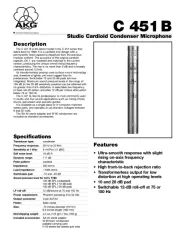
2 Augustus 2025
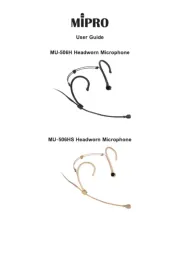
29 Juli 2025
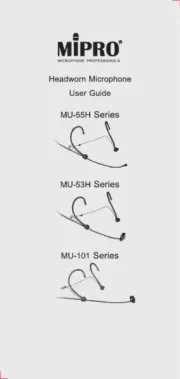
29 Juli 2025
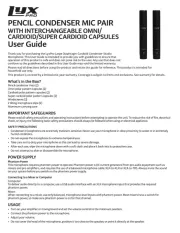
29 Juli 2025

29 Juli 2025
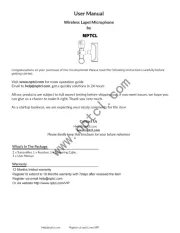
28 Juli 2025
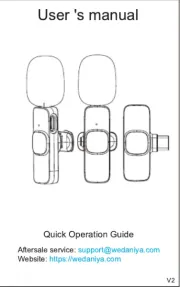
28 Juli 2025
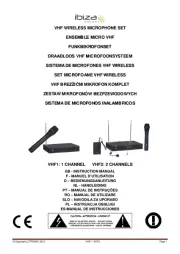
28 Juli 2025
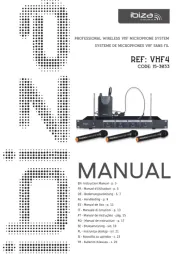
28 Juli 2025
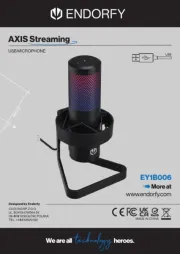
23 Juli 2025